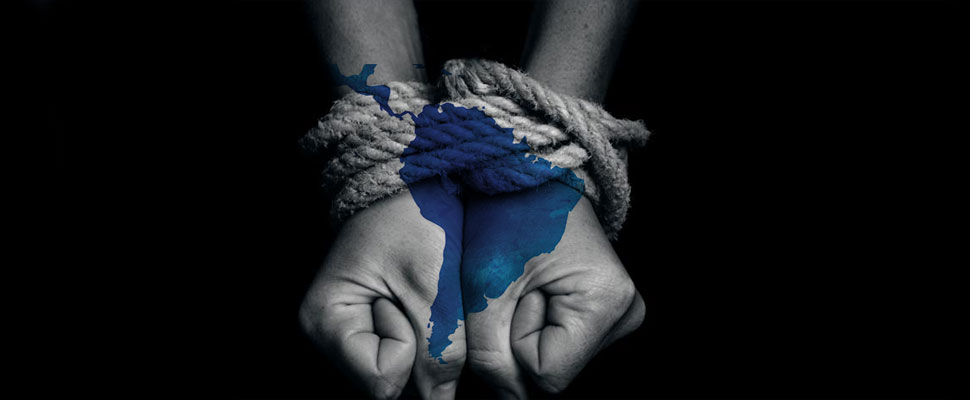Is Latin America ready to fight against the illegal trafficking of people?
This illegal business produces 150 billion dollars annually worldwide

On April 30, at least 350 people were rescued in an Interpol operation in 13 countries in Latin America and the Caribbean. In a statement from that institution, the so-called Operation Freedom, coordinated from Barbados, deployed 500 agents who captured 22 people in brothels, farms and mining, markets and factories. According to Interpol, during the raids men, women, and children were rescued.
Leer en español: ¿Está Latinoamérica preparada para luchar contra el tráfico ilegal de personas?
Human trafficking is the contemporary face of slavery. It does not distinguish from race or gender, but it affects more vulnerable human groups, such as women or children. Of those 350 people rescued, they are likely to suffer some kind of sexual or labor exploitation. However, the spectrum of trafficking also includes the trade in organs, the so-called mules or people who transport drugs, and even servile marriage.
The phenomenon of human trafficking is not new, but its causes can be diverse. The same organization explained in its web portal that as the victims manage to increase their income in comparison to what they could earn in their countries of origin, they do not considered themselves as "victims". In general, those who capture people to traffic them achieve this through promises of better living conditions, which is very striking about the way in which human trafficking operates.
Human trafficking is the contemporary face of slavery
According to an exploratory study, presented in 2009 by the National University of Colombia and the United Nations Office on Drugs and Crime (UNODC), the rise of this crime is due to several factors, such as lack of Opportunities, gender inequality, poverty, and even the presence of armed conflicts. These elements are catalysts for the illegal trafficking of people.
The panorama in Latin America is mixed, according to the latest report on human trafficking of the United States Department of State. Two South American countries are in the first category. Chile and Colombia are recognized for building and encouraging policies against the spread and practice of this crime. The standards are set by the Trafficking Victims Protection Act (TVPA), a US federal statute that provides tools to combat trafficking.
On the other hand, Argentina, Brazil, Costa Rica, Dominican Republic, Ecuador, El Salvador, Honduras, Mexico, Panama, Paraguay, Peru, and Uruguay belong to the second category. This classification means that nations do not meet minimum standards to stop trafficking, but they are making significant efforts to achieve it.
Bolivia, Cuba, Guatemala, and Nicaragua are part of an observation list in the same category as the previous countries, but they are singled out because they cannot provide evidence that their efforts are reducing trafficking rates in all their forms. Likewise, the commitments of these countries to establish serious efforts to reduce such crime should take place between mid-2017 and mid-2018.
Worldwide, this business generates about 150 billion dollars annually and affects 2.5 million people
However, the situation in Venezuela worries the international community in relation to the fight against modern forms of slavery. It is the only country in the region that belongs to the third-and lowest-category, in terms of mitigating trafficking in people. According to the report of the Department of State, this country not only fails to reach minimum standards, but is not making significant efforts to achieve them either.
Some figures and data that can help size the problem are those provided by the UNODC in its latest report on the subject: globally this business generates about 150 billion dollars annually and affects 2.5 million people. Six out of ten victims are transferred to countries different from those of their origin. Likewise, around two thirds of the victims are women and one of the largest flows of Latin American citizens is to Eastern Europe.
Although in the region it seems to be aimed at strengthening its fight against the illegal trafficking of people, it is clear that the challenges are more than advances. The same Department of State of the United States recognizes, in its report, that even the countries in the first category must continue to improve, since the clandestine nature of the business and the political instability in regions like Venezuela facilitate that this practice is strengthened.
LatinAmerican Post | Iván Parada Hernández
Translated from “ ¿Está Latinoamérica preparada para luchar contra el tráfico ilegal de personas?”





